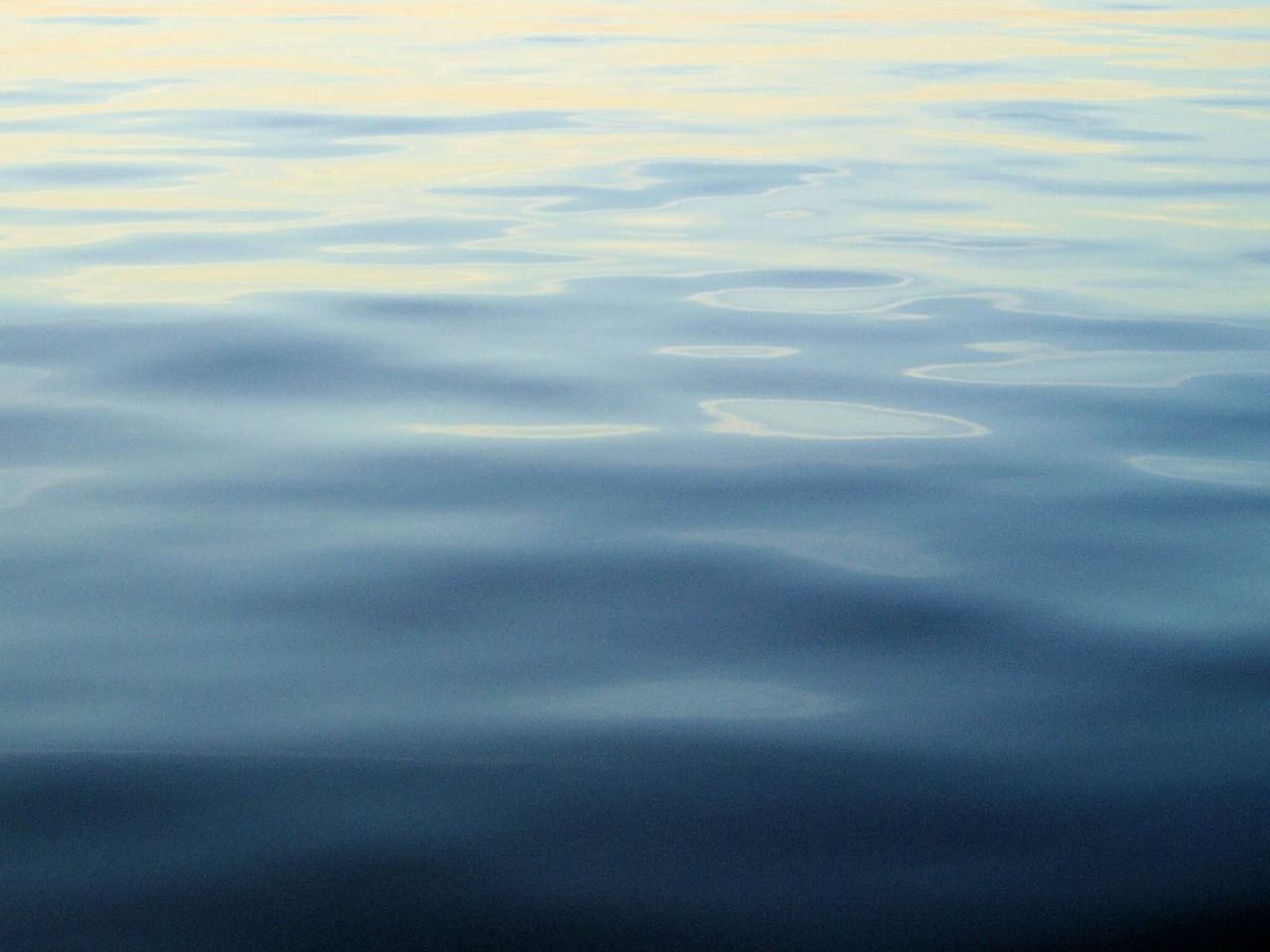Project
Integrated chemical and biological monitoring

Integrated chemical and biological monitoring as demanded by international conventions
Measuring one single contaminant, doesn't answer the question if the fish is healthy. Are other contaminats present too? Are deleterious effects of the contaminants detectable or might the fish be ill? All these aspects have to be looked at together - in an integrated way.
Background and Objective
Integrated monitoring and the ecosysteme approach in environmental assesment are the core topics of the European Marine Strategy Framework Directive (EU MSFD). Integrated assessment stands for a joint view on single indicators e.g. contaminants and their effects in fish and fish diseases. The aim is to evaluate the "ecosysteme health" or the "good environmental status" to identify regions under pressure.
Approach
With our research vessel Walther Herwig III, we sample and investigate fish directly on board. Further on we collect samples for chemical and biological investigations in our research laboratories. We develop indicators, criteria and startegies for environmental assessment.
Data and Methods
The Thünen Institure of Fisheries Ecology is active in data collection leated to EU MSFD descriptor 8. These data comprise contaminants (organic contaminants, metabolites, heavy metals and radionuclides), as well as fish diseases and more biological effects.
The complete List of German MSFD indicators linked to the contribution of the Thünen Institute can be found here.
Our monitoring results were collected in a Thünen database and were also made available in national and internationale databeses for an European environmental assessment as demanded by EU MSFD.
Preliminary Results
The results are present in numerous scientific publications as well as in international reports.
Thünen-Contact

Involved Thünen-Partners
- Aust, Marc-OliverFI Institute of Fisheries Ecology
- Dorrien, von, ChristianOF Institute of Baltic Sea Fisheries
- Kammann, Ulrike FI Institute of Fisheries Ecology
- Nogueira, PedroFI Institute of Fisheries Ecology
- Probst, WolfgangSF Institute of Sea Fisheries
- Rödiger, MarcellusSF Institute of Sea Fisheries
- Rödiger, MarcellusSF Institute of Sea Fisheries
Duration
Permanent task 1.2001 - 12.2024
More Information
Project status:
ongoing
Publications
- 0
Wilczynski W, Radlinska M, Wysujack K, Czub M, Brzezinski T, Kowalczyk G, Beldowski J, Nogueira P, Maszczyk P (2022) Metagenomic analysis of the gastrointestinal microbiota of Gadus morhua callarias L. originating from a chemical munition dump site. Toxics 10(5):206, DOI:10.3390/toxics10050206
- 1
Nogueira P, Hiller M, Aust M-O (2019) Monte Carlo simulation of dose coefficients for a fish eye lens model exposed to monoenergetic electrons. J Environ Radioact 199-200:7-15, DOI:10.1016/j.jenvrad.2018.12.021
- 2
Eriksson M, Ikäheimonen TK, Jakobson E, Nielsen SP, Kämäräinen M, Lüning M, Aust M-O, Osvath I, Schmied S, Vilimaite-Silobritiene B, Suplinska M, Zalewska T, Vartti V-P (2018) Thematic Assessment of Radioactive Substances in the Baltic Sea, 2011-2015. Helsinki: HELCOM, 74 p, Baltic Sea Environ Proc 151
- 3
Vethaak AD, Davies IM, Thain JE, Gubbins MJ, Martinez-Gomez C, Robinson CD, Moffat CF, Burgeot T, Maes T, Wosniok W, Giltrap M, Lang T, Hylland K (2017) Integrated indicator framework and methodology for monitoring and assessment of hazardous substances and their effects in the marine environment. Mar Environ Res 124:11-20, DOI:10.1016/j.marenvres.2015.09.010
- 4
Andersen JH, Murray C, Larsen MM, Green N, Hogasen T, Dahlgren E, Garnaga-Budré G, Gustavson K, Haarich M, Kallenbach EM, Mannio J, Strand J, KorpinenS (2016) Development and testing of a prototype tool for integrated assessment of chemical status in marine environments. Environ Monit Assessm 188:115, DOI:10.1007/s10661-016-5121-x
- 5
Karl H, Kammann U, Aust M-O, Manthey-Karl M, Lüth Anja, Kanisch G (2016) Large scale distribution of dioxins, PCBs, heavy metals, PAHmetabolites and radionuclides in cod (Gadus morhua) from the North Atlantic and its adjacent seas. Chemosphere 149:294-303, DOI:10.1016/j.chemosphere.2016.01.052
- 6
Schubert S, Keddig N, Gerwinski W, Neukirchen J, Kammann U, Haarich M, Hanel R, Theobald N (2016) Persistent organic pollutants in Baltic herring (Clupea harengus) - an aspect of gender. Environ Monit Assessm 188:388, DOI:10.1007/s10661-016-5363-7
- 7
Aust M-O, Nogueira P, Kanisch G (2015) Die Reaktorkatastrophe von Fukushima und ihre Auswirkungen auf die Meeresumwelt. In: Umweltradioaktivität in der Bundesrepublik Deutschland : Bericht der Leitstellen des Bundes und des Bundesamtes für Strahlenschutz ; Stand 2014 ; Daten und Bewertung. Bonn: Bundesministerium für Umwelt, Naturschutz, Bau und Reaktorsicherheit (BMUB), pp 61-65
- 8
Aust M-O, Nogueira P, Kanisch G (2015) Radioaktive Stoffe in Fischen. In: Umweltradioaktivität in der Bundesrepublik Deutschland : Bericht der Leitstellen des Bundes und des Bundesamtes für Strahlenschutz ; Stand 2014 ; Daten und Bewertung. Bonn: Bundesministerium für Umwelt, Naturschutz, Bau und Reaktorsicherheit (BMUB), pp 55-60
- 9
Wernersson AS, Carere M, Maggi C, Tusil P, Soldan P, James A, Sanchez W, Dulio V, Broeg K, Reifferscheid G, Buchinger S, Maas H, Grinthen E van der, O'Toole S, Ausili A, Manfra L, Marziali L, Polesello S, Lacchetti I, Kammann U, et al (2015) The European technical report on aquatic effect-based monitoring tools under the water framework directive. Environ Sci Europe 27:1-11, DOI:10.1186/s12302-015-0039-4
- 10
Lehtonen KK, Sundelin B, Lang T, Strand J (2014) Development of tools for integrated monitoring and assessment of hazardous substances and their biological effects in the Baltic Sea. Ambio 43(1):69-81, DOI:10.1007/s13280-013-0478-3
- 11
Wernersson AS, Carere M, Maggi C, Tusil P, Soldan P, James A, Sanchez W, Broeg K, Kammann U, Reifferscheid G, Buchinger S, Maas H, Grinthen E van der, Ausili A, Manfra L, Marziali L, Polesello S, Lacchetti I, Mancini L, Lilja K, et al (2014) Technical report on aquatic effect-based monitoring tools. Luxembourg: Office for Official Publications of the European Communities, 80 p
- 12
Wernersson AS, Carere M, Maggi C, Tusil P, Soldan P, James A, Sanchez W, Broeg K, Kammann U, Reifferscheid G, Buchinger S, Maas H, Grinthen E van der, Ausili A, Manfra L, Marziali L, Polesello S, Lacchetti I, Mancini L, Lilja K, et al (2014) Technical report on aquatic effect-based monitoring tools : Annex. Luxembourg: Office for Official Publications of the European Communities, 159 p
- 13
Haarich M, Lang T (2013) Wie belastet sind Fische aus der Ostsee? Meer Küste 4:20-21
- 14
Hylland K, Maes T, Martinez-Gomez C, Kammann U, Gubbins MJ, Davies IM (2012) Background document: Cytochrome P450 1A activity (EROD). ICES Coop Res Rep 315:26-29
- 15
Lang T, Feist SW, Wosniok W, Vethaak AD (2012) Background document: externally visible fish diseases, macroscopic liver neoplasms, and liver histopathology. ICES Coop Res Rep 315:84-103
- 16
Kammann U, Lang T, Wosniok W (2012) Biological effects monitoring in marine research. Environ Sci Europe 24:1, DOI:10.1186/2190-4715-24-1
- 17
Davies IM, Gubbins MJ, Hylland K, Thain JE, Maes T, Martinez-Gomez C, Giltrap M, Burgeot T, Wosniok W, Lang T, Vethaak AD (2012) Technical annex: assessment criteria for biological effects measurements.. ICES Coop Res Rep 315:209-212
- 18
Vethaak AD, Lang T, Davies IM (2012) Technical annex: sampling and analysis for integrated chemical and biological effects monitoring in fish and shellfish. ICES Coop Res Rep 315:182-190
- 19
Wosniok W, Lang T (2009) Annex 7: Progress made in the modification of the Fish Disease Index (FDI) and the assessment of the ICES fish disease (update of OSPAR request 13/2008). In: Report of the Working Group on Pathology and Diseases of Marine Organisms. Copenhagen: ICES, pp 59-76
- 20
Kammann U, Kellermann H-J (2007) Annex 9: A way to regional background values of EROD activity in dab. In: Report of the ICES/OSPAR workshop on integrated monitoring of contaminants and their effects in coastal and open-sea areas (WKIMON III) : 16-18 January 2007, ICES Headquarters. ICES CM 2007/ACME:01. Copenhagen: ICES, pp 83-94
- 21
Olsman H, Engwall M, Kammann U, Klempt M, Otte J, van Bavel B, Hollert H (2007) Relative differences in aryl hydrocarbon receptor-mediatedresponse for eighteen polybrominated and mixed halogenated dibenzo-p-dioxins and -furansin cell lines from four different species. Environ Toxicol Chem 26(11):2448-2454

![[Translate to English:] Logo des Bundesministerium für Ernährung und Landwirtschaft](/media/allgemein/logos/BMEL_Logo.svg)